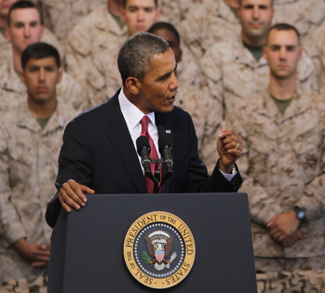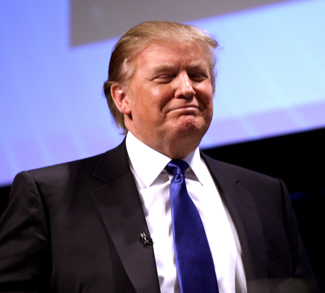India’s long time cordial relations with Iran came under temporary stress with the regime change in 1979. However, as the fervor of the ouster of monarchy and induction of revolution subsided, and Iran inched towards normalcy, Indo-Iran relations began making a steady comeback. Yet things were not the same. In the wake of Iran-US stand-off, and Tehran’s unabashed hostility towards Israel, India had to handle the Washington-Tel Aviv-Tehran axis with singular caution.
Through the 1980s, two unrelated situations gripped the Middle East and the Indian sub-continent, both with large impacts. One was the nuclear program of Iran which rattled the U.S. and Western powers, and the second was the emergence of religion-based terror in the sub-continent, with its epicenter in Af-Pak region.
As Iran proceeded with her nuclear program despite strong American opposition, and afterwards the imposition of sanctions by the United Nations via a US-EU sponsored resolution, India found she was in a somewhat precarious position. The destruction of Saddam Hussein and the depletion of Iraqi crude supplies hurt India’s economic growth rate; Iraq had accounted for one-third of her total fuel requirements.
This was a time when India, under P.V. Narasimha Rao, wanted to play a role in reducing tensions in the region. However, India had no real leverage in the West Asian political conundrum. Also, owing to the baggage of her domestic problems – heightened by low caliber strategists – she could not make any headway.
For more than two decades, New Delhi went on assuring Tehran’s theocratic regime that her looking towards Israel was a compulsion thrust from the rising crescendo of religious extremism across the border. In a sense, the rise of the teachings of the Saudi ideologue Abdul Wahhab in the Sunni world helped India in neutralizing Iran’s apprehensions and even moving a step forward in wooing her to become a trade partner.
In order to contain US-Pak influence making deep inroads into the Central Asian region after the implosion of the Soviet State, India and Iran agreed in 2003 to develop the Chah Bahar port on the Gulf of Oman, near Iran’s border with Pakistan. India had contributed to the rail link between Chah Bahar and Sirakhs, the last post on the Iran-Turkmenistan border and India’s newly discovered port of entry to Central Asia. However, this route – a possible alternative for India’s trade link with Central Asia – needed to be raised to commercial level.
In this as well as the much-talked about Iran-Pakistan-India (IPI) gas pipeline, American sanctions on Iran remained a stumbling block. Even India’s bid to buy more crude from Iran had to be clinched at some pain owing to these sanctions. Iran was a big stick the United States used to beat India with. During negotiations on India’s nuclear deal with the United States, Iran even found mention in the deal’s final text.
Yet India did not fail to look to Indo-Iran relations beyond the prism of economic sanctions. The two countries maintained relations despite the US-led trade restrictions that halved their oil trade to 220,000 barrels per day last year.
In May of last year, India Shipping Minister Nitin Gadkari and his Iranian counterpart, Abbas Ahmad Akhoundi, signed an $85 million deal for India to lease two existing berths at the port and use them as multi-purpose cargo terminals. Under the new proposal, India could help build second and third terminals at the port, as well as railway connections into the rest of Iran.
Earlier this year, India’s stepped up its high-level engagement: NSA Ajit Doval visited Tehran, followed by union minister Nitin Gadkari and then foreign secretary S Jaishankar. Around July 10, PM Modi held his first meeting with President Rouhani in Ufa, on the sidelines of the Shanghai Cooperation Organization (SCO) summit. Foreign minister Sushma Swaraj had also announced she’d be traveling to Iran.
Eighteen months of long and tortuous nuclear negotiations between the US+5 and Iran have finally culminated in the framework deal which has been endorsed by the Security Council.
Iran has agreed to stop the production of nuclear materials on a large scale. This will see the lifting of UN imposed sanctions. This development will have far-reaching implications for the world and also for India. Apart from healthy impact on Indo-Iran trade and commercial relations, the Iran nuclear deal has crucial strategic implications as well.
Iran remains handicapped in the face of sanctions which seriously impacted her foreign policy. After the lifting of sanctions, the first strategic area in which its impact has to be monitored is the anti-Shiite wave unleashed by pro-Wahhabi extremists in some parts of the Islamic world. The United States with her commitment to putting an end to terrorism, and India, the home to second-largest Muslim population in the world with a Shia majority, are crucial to the formulation of Iran’s attitude towards the radicalism of ISIS, Al Qaeda, TTP and various other terrorist proxies.
There is no doubt that after the sanctions are lifted, Iran is poised to become the most dominant power in the Gulf region. With the current scenario in West Asia and Afghanistan, it is very likely that strategic cooperation between Iran and the United States will be adjusted to meet the challenges of radicalism.
India stands to gain significantly from the emerging scenario. Iranian President Hassan Rouhani has asked India to invest in infrastructure projects worth $8 billion, including an expanded role in developing a strategic port of Chah Bahar that will open up access to Central Asia.
This port in southeast Iran is central to India’s efforts to circumvent arch-rival Pakistan and open up a route to landlocked Afghanistan, where it has developed close security ties and economic interests.
According to the Iranian ambassador in New Delhi, President Rouhani suggested a larger role for India during a meeting with Prime Minister Narendra Modi on the sidelines of the Ufa summit, before the historic nuclear deal was concluded. The ambassador said that with sanctions likely to be lifted soon, it was a “golden time” for India to seize investment opportunities because of the two countries’ close trade ties and shared interest in improving Central Asian transport links.
Buoyed by Iran’s historic nuclear accord with world powers set to end sanctions, India will ask Tehran for rights to develop the ONGC-discovered Farzad-B gas field in the Persian Gulf, even as it prepares to pay $6.5 billion in past oil dues.
Indian firms have so far shied away from investing in Iran for the fear of being sanctioned by the United States and Europe. The same was deterring New Delhi from claiming rights to invest nearly $7 billion in the biggest gas discovery ever made by an Indian firm abroad.
“We have been in negotiations with Iran over the development of the Farzad-B gas field. Now that sanctions will be eased, we expect Iran to give us the developmental rights,” OVL managing director Narendra K Verma said.
The signing of the Iran nuclear deal and lifting of sanctions on Iran is a major event in contemporary history. It is bound to impact the ongoing situation in the entire Asian region; the large scale anti-Shiite insanity, the Afghan entanglement, terrorist proxies and the Wahhabi permeation. It will open prospects of new alignments and strategies in which India and Iran will have a leading role. Resumption of talks on the IPI gas pipeline, opening up of Iran to Indian IT investment, full commercialization of Chah Bahar-Sirakhs connectivity for entry to Afghanistan and Central Asia, and Iran’s enhanced partnership in Indian Ocean maritime trade could all be the side effects of the new alignment.




